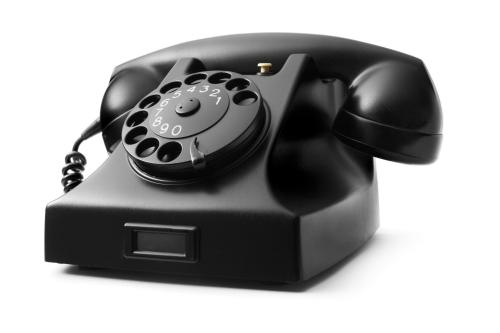Today, the reality is different. LinkedIn has become a platform for professional content and a showcase where companies share innovation, leaders convey their vision, and professionals build their personal brand. This network has undoubtedly established itself as a strategic tool for gaining visibility, generating conversation, and building reputation. But, as with all platforms or networks, the way we share or interact with other users makes the difference between being visible or going unnoticed.
In my case, and what motivates me to write this article, I have been posting every Monday on my professional profile for nine months. During this time, I have been able to see what drives interaction, what types of content really work and what content does not contribute anything. Below, I share a practical guide based on my direct experience.
Update your profile
Before you start posting, review your description, language, photo and storytelling. Not in CV mode, but in cover letter mode. To do this, here are three steps:
- Answer clearly: Who are you? What do you contribute? Why do you do what you do? Summarise your value proposition in three concise lines.
- Describe your career in a clear and approachable way.
- Accompany your achievements with lessons learned to give context and real value to your experience.
A well-crafted profile conveys professionalism and increases the credibility of any post.
Design a content strategy
Posting without a plan is like sailing without a destination. Before facing the blank page, think about what you are going to talk about and what lessons you can share to inspire others.
- If you don’t know where to start, here is a guide with five basics to answer the key questions:
- Purpose: What do you want to project and why?
- Consistency: What you say, do, and share all point in the same direction.
- Channel: choose where you want to be present (it’s not about being everywhere).
- Consistency: it’s no good doing it once and then disappearing; it’s a long-distance race.
- Value: what you share has to contribute something to others, based on your experience in the area.
Define:
- Topics you want to position yourself on (technology, entrepreneurship, leadership, etc.).
- Lessons learned and experiences you can share.
- Medium-term goals (visibility, reputation, networking, etc.).
This will help you avoid improvising and maintain a consistent narrative.
Plan and persevere
In my case, I post every Monday at 8:30 a.m. Having a schedule creates a commitment to yourself and your community. The key is to work in advance and plan your posts. In addition, LinkedIn rewards regularity and recurrence.
Choose hashtags that are appropriate for the storytelling of the post
It’s not about using the most popular or the most massive ones, but the ones that best connect with your theme. Tools such as Hashtag Analytics can help you select relevant and strategic tags.
Generate conversation
Respond to comments, mentions and private messages. What strengthens your profile is not impressions, but the conversations that arise from your posts. It all adds up to building your community.
Accompany your posts with personal photos
Your own images humanise you and create closeness. A photo increases interaction and conveys authenticity. Showing your professional day-to-day—a project you’re working on, an event you’re attending, or even your workspace—helps bring your story to life and connect on a human and professional level.
In addition, images provide context for your reflections and learnings, reinforcing the message of your post. They don’t have to be perfect or studio-quality; the important thing is that they are real and convey who you are.
Writing and formatting: keys to making your post stand out
Good content is also visually appealing. Review these points:
- Clear structure with short paragraphs or lines (promotes quick and rhythmic reading).
- Messages that are easy to read for those who scroll quickly.
- Support tools such as LinkedIn Text Formatter to improve visual appearance.
How to measure results on LinkedIn
At least once a month, review which posts performed best, which had less impact, and why.
To do this in a clearer and more organised way, you can keep an Excel spreadsheet where you record the key metrics for each post: impressions, interactions, type of content or format, hashtags used, time of publication, among others.
Analysing this data allows you to adjust your strategy, better understand your audience, and make more informed decisions about what to share and how to optimise your presence on LinkedIn.
What doesn’t work on LinkedIn (and should be avoided to prevent failure)
- Posting out of obligation: It’s obvious when content is forced. Don’t post ‘just because you have to’; it detracts from your authenticity. If you don’t have anything to post that week, try interacting with your audience or other creators.
- Obsessing over metrics: Impressions don’t build community; conversations do.
- Sticking to theory: Reflections based on your own experiences generate more credibility than generic content.
- Expecting immediate results from every post. Not everything you publish will have the same impact, and that’s okay. The important thing is to learn from the process.
- Following trends indiscriminately: Repeating what everyone else is saying rarely builds reputation. Authenticity is more valuable than passing fads.
My relationship with LinkedIn began long before I set myself the challenge of publishing every week. For years, I worked on promoting social media visibility projects for Telefónica and accompanying company executives and experts in thought leadership programmes. The mission was clear: to position key voices in the innovation, technology and digitalisation sector, turning LinkedIn into a strategic mouthpiece for the company.
After that experience, it was time to take it to my own turf. “This year, no matter what. No matter what happens, I’ve got you where I want you.” That was the promise (and work goal) I made to myself: to work hard and with commitment on my personal brand.
The bottom line is that what works for a large company also works for every professional: consistency, authenticity and shared value. LinkedIn is now much more than a place to look for a job: it is a









